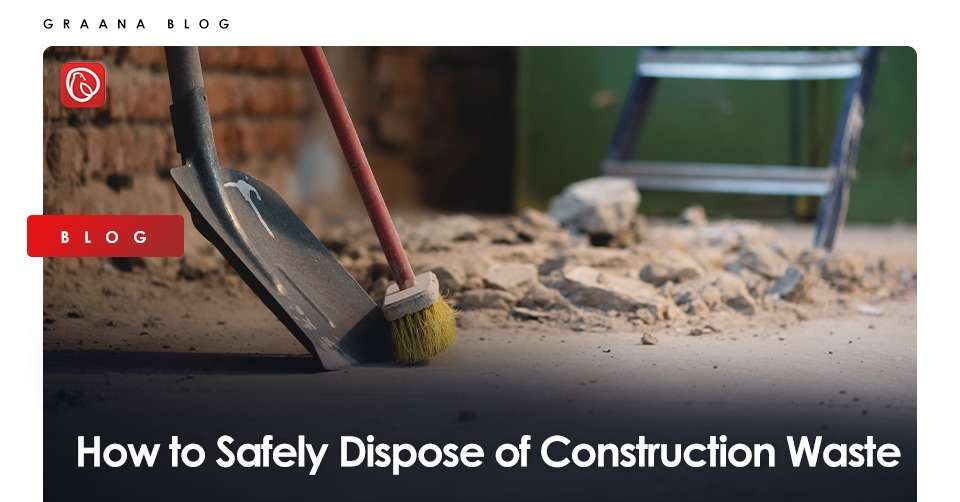The unwanted materials produced during construction projects, renovation work, or demolition processes are collectively known as construction waste. It is often referred to as construction and demolition waste (CDW) in construction waste management.
Thousands of tons of construction waste are produced each year from all the construction projects across the country. Most of the debris and construction waste is sent to landfills, which eventually become a source of environmental pollution. However, waste that can be recycled or reused is utilised in several other construction projects.
Because of the high cost, the environment has to pay due to these wastes, construction companies are working on safe and durable waste management techniques. For every contractor and investor, effective waste management should be a top priority.
Waste disposal describes all the methods and measures that can reduce waste to harmless materials.
Graana.com, Pakistan’s smartest property portal, brings a complete guide to safely disposing of construction waste.
Types of Construction Waste
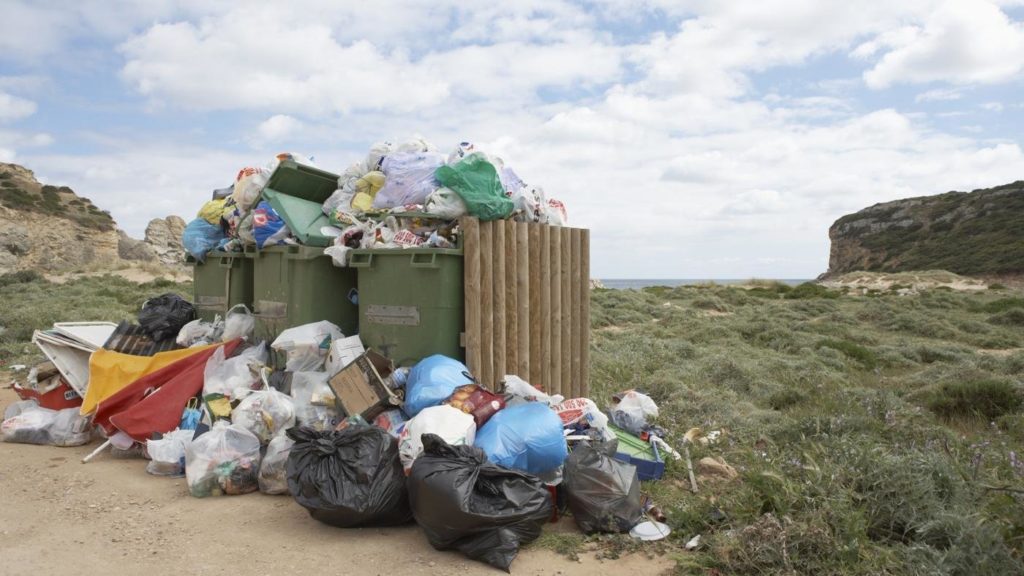
Construction and demolition wastes are mainly characterized into two categories:
- Non-hazardous construction waste
- Hazardous construction waste
These are degradable or non-degradable, and can also be further categorized for their reuse or disposal.
Disposal of Non-Hazardous Construction Waste
Non-hazardous waste is not harmful and can be reused in other projects. The following is a list of non-hazardous waste:
- Concrete
- Bricks
- Tiles and ceramics
- Charmander
- Wood-untreated
- Glass (uncontaminated)
- Plastic (excluding packaging waste)
- Bituminous
- Soil and stones
- Gypsum materials
- Dredging soil
- Electrical wires
- Water pipes
- Décor items
Ways to dispose of wastes
These materials can be disposed of in the following ways:
- Donating unwanted material
- Reusing or recycling the waste
- Landfilling
Donating Unwanted Material
While renovating or rebuilding properties, there are several useless construction materials that can be donated to people in need. For instance, décor items and old home appliances can be donated to different communities that can benefit from them.
Old electric and water pipes, old carpets and rugs, and many other objects that are non-hazardous can be donated.
Reusing or Recycling Construction Waste
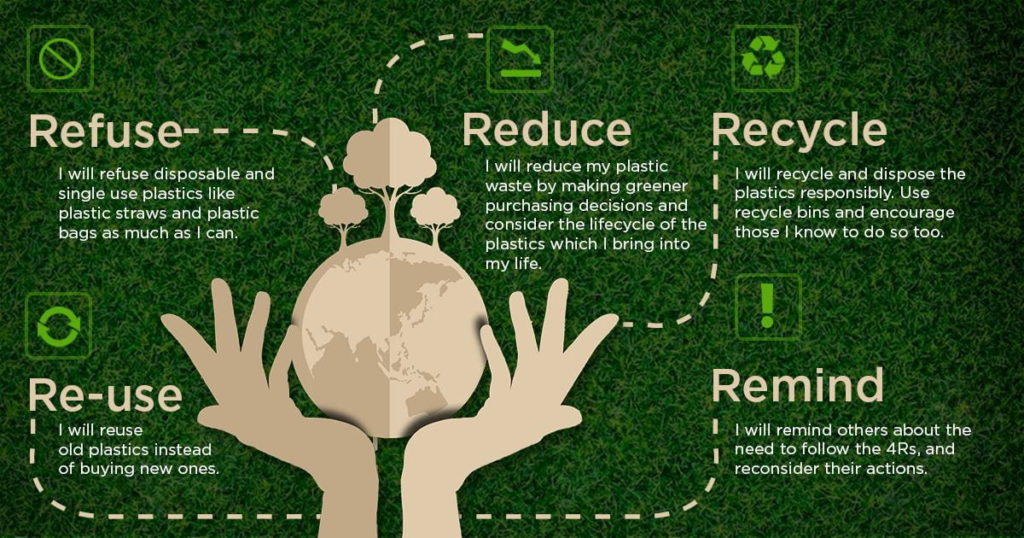
Construction waste, in most cases, is reduced to absolutely zero waste through various methods. However, there is always a possibility that some parts of it can be recycled or reused, for example, scrap metals, wood structures, and concrete rubbles.
Another alternative is to sell it as scrap to various dealers, who recycle the waste and sell it for use in other construction projects.
Construction waste can be recycled by using the following ways:
- Metals into new objects of decoration
- Old wood to make doors and other objects
- Concrete into aggregate and concrete producers
Landfilling
It is one of the most used methods of construction waste disposal in Pakistan. The quality of construction wastes is regulated according to international standards, along with other specific standards set by a particular country. Hazardous construction waste and industrial or chemical waste cannot be deposited in landfills.
Disposal of construction waste in landfills causes contamination of underwater reservoirs. Moreover, in some cases, it causes the hardening of the earth’s surface, causing several problems during cultivation.
So, landfill disposal should be done with proper guidelines. Waste should be sorted out and then disposed of in designated areas of landfills.
Disposing Hazardous Construction Waste
According to the Health and Security Executive, waste is considered hazardous if it is harmful to humans, animals, and the environment. This waste might not have an immediate effect, but it can damage the balance of the environment in years to come.
Hazardous construction waste is properly treated before being disposed of in landfills or other places. Environment protection agencies and governments across the country have set standards for hazardous waste treatment.
Following are the most important hazardous waste:
- Asbestos
- Treated wood, plastics, and glass
- A bituminous mixture containing coal and tar products
- Metals containing dangerous substances
- Cables with oils and coal tar
- Rubble or hardcore material containing toxic substances
- Gypsum materials such as plasterboards
- Unused cement
- Paints and varnishes with organic solvents
- Paint and varnish removers
- Sealants and adhesives
- Empty packaging
Disposal of Asbestos Construction Waste
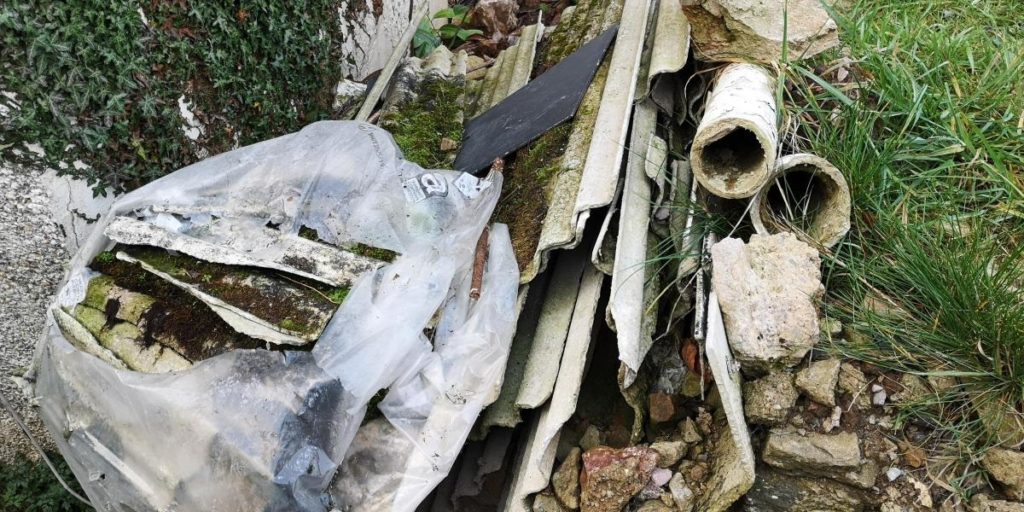
Asbestos is mainly used for resistance and insulation of the building. Mostly, it is used in resilient floor covering, roofs, and cement products. Asbestos can be very dangerous if it is not handled properly.
Before disposal, asbestos is packed in leak-tight containers, wrapped, and then disposed of at a licensed disposal site. Asbestos waste has categories based on hazard levels. Certain categories of asbestos can be deposited with other demolition waste.
Construction wastes containing mercury, lead, and aluminium-based waste are taken to unique recycler plants or consolidation sites. Mercury-based waste is separated and packed to be treated in specified chambers. All other components are treated inside the plant and transferred to local solid waste managers.
How to Improve Construction Waste Disposal Process?
The waste disposal process is regulated by environmental protection agencies and governments. However, in most countries, these regulatory procedures are not followed properly, which causes environmental issues. Waste management can be optimized using better techniques.
The following are some strategies that can be adopted to improve the waste disposal process:
- Making smart construction sites for on-site management
- Using smart construction materials
- Developing waste disposal plan
- Executing regular audits
- Performing waste separation on-site
- Setting responsibilities of teams for various wastes
- Planning strategies to reuse or recycle specified wastes
- Use of more eco-friendly materials
- Employing waste reduction strategies
Developing Construction Waste Disposal Plan
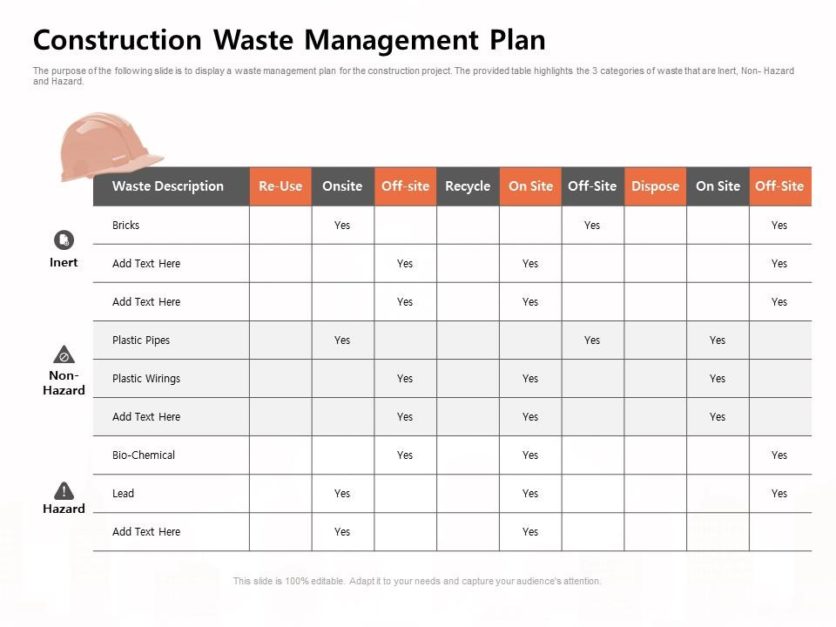
Construction waste disposal plans help in the proper disposal of every type of waste produced during construction or renovation works. A building waste disposal plan should evaluate:
- Types of material to be used and wastes that can be produced
- Waste generation through each phase of the construction
- Waste handling and storage during each step
- Adaptation of Waste Removal Procedures
While formulating waste disposal plans, proper techniques and protocols should be kept in mind so that the process is legally regulated by governments. Moreover, all the waste disposal measures should keep environmental and worker safety as a top priority.
Executing Regular Waste Management Audits
Waste management audits are performed at various intervals of the project. These audits make sure that the subcontractors and workers are properly disposing of the waste. Moreover, these audits help identify the waste that can be recycled and reused. Waste audits are also necessary to identify potential areas of concern that need to be addressed.
Performing Waste Separation On-Site
On-site waste separation is a process to segregate waste by its types and then treat them at specified disposal sites. It saves time and cost to manage waste. Additionally, there are chances that on-site separation might help divert landfill waste to various recycling plants.
In most real estate projects, due to to time wastage, on-site separation is not preferred.. However, allocating construction teams the time and space for on-site separation can help in the effective disposal of waste, and it makes the procedure environment-friendly as well.
Employing Waste Reduction Strategies
Effective waste management and disposal plans are important, but the best way to make the process more efficient is to minimize the waste produced during different phases. The following strategies can be applied to reduce waste:
- Invest money in the material management process
- Use selective procedures for effective demolition
- Plan for material recycling or reusing in the later phases of construction
Adopting these measures and strategies can help to safely manage and dispose of waste.
For more information about construction materials, visit Graana blog.
